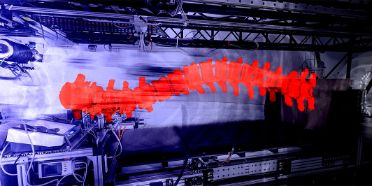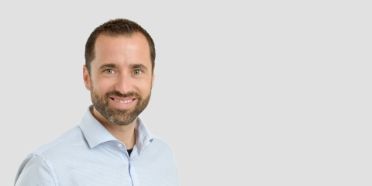ScolioGravity
This study uses centrifugation to explore links between vestibular function and spinal muscle control in adolescents with idiopathic scoliosis.
Factsheet
- Schools involved School of Health Professions
- Institute(s) Physiotherapy
- Research unit(s) Spinal Movement Biomechanics
- Funding organisation Others
- Duration (planned) 01.07.2025 - 31.12.2026
- Head of project Prof. Dr. Stefan Schmid
-
Project staff
Aglaja Busch
Dr. Jaap Swanenburg
Prof. Dr. Ramona Ritzmann
Prof. Dr. Carol-Claudius Hasler
Prof. Dr. Moritz Deml
Prof. Dr. Dominik Straumann
Prof. Dr. Julia Dlugaiczyk
Dr. Timo Frett - Partner European Space Agency (ESA)
Situation
Adolescent idiopathic scoliosis (AIS) is a complex 3D spinal deformity with a poorly understood etiology and pathogenesis. Emerging evidence suggests that the deformation, which occurs usually around the onset of puberty, might be determined, and even triggered by a unilateral vestibular dysfunction, resulting in an imbalanced descending drive to the spinal muscles. A distinction of this mechanism, however, is not applicable in humans during erect activities because of the overlying stabilizing muscle activity universally persistent in 1g environments. To investigate possible links between vestibular function and spinal muscle activity in AIS, this project will therefore observe paraspinal muscle activity during gradual unloading of the spine through centrifugation with a short-arm centrifuge.
Course of action
We will enroll 10 patients with mild to moderate main thoracic AIS as well as 10 age- and sex-matched healthy controls aged between 12 and 18 years. After a comprehensive evaluation of vestibular function at the University Hospital Zurich, Switzerland, participants will be invited for a visit to the DLR’s :envihab facility in Cologne, Germany. Activity of the erector spinae muscle at spinal levels as well as selected abdominal muscles will be measured using a telemetric 16-channel surface EMG system. Measurements of isometric reactive trunk muscle activation will be conducted during centrifugation (in supine position) as well as upright standing (before and after centrifugation). Centrifugation will start with an initial artificial gravity condition of 1g, which will then be gradually decreased to 0g in 0.1g-steps (each step held for 1 minute). Besides a better understanding of the pathogenesis of AIS and the consequent improvement of preventive and therapeutic approaches, this study will substantially contribute to the general understanding of postural control modulation of the spine, which might have a direct impact on the astronauts’ training routines before, during and after spaceflight.

